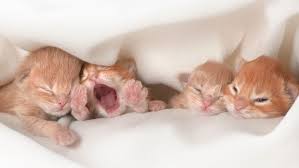Atresia Ani is a rare congenital condition that affects kittens, causing a malformation of the anus. This condition can be distressing for both the kitten and its owner, as it can lead to serious health complications if left untreated. Understanding the symptoms, treatment options, and prevention methods for Atresia Ani is crucial for ensuring the well-being of affected kittens.
What is Atresia Ani?
Atresia Ani is a condition where the anus is either completely closed or only partially formed in kittens. This malformation can prevent the kitten from passing stool normally, leading to a buildup of waste in the intestines. This can cause discomfort, pain, and potentially life-threatening complications if not addressed promptly.
Symptoms of Atresia Ani
Kittens with Atresia Ani may exhibit symptoms such as straining to defecate, a distended abdomen, vomiting, and a lack of appetite. They may also have diarrhea or constipation, as well as visible signs of distress or discomfort. If you notice any of these symptoms in your kitten, it is important to seek veterinary care immediately.
Diagnosis and Treatment
Diagnosing Atresia Ani in kittens typically involves a physical examination, as well as imaging tests such as X-rays or ultrasounds. Treatment for this condition usually requires surgery to correct the malformation and create a functional anus for the kitten. This procedure is often successful in allowing the kitten to pass stool normally and lead a healthy life.
Prevention of Atresia Ani
Unfortunately, there is no surefire way to prevent Atresia Ani in kittens, as it is a congenital condition that is present at birth. However, breeding practices can play a role in reducing the likelihood of this condition occurring in kittens. Responsible breeding, genetic testing, and proper veterinary care for pregnant cats can help minimize the risk of congenital abnormalities like Atresia Ani.
Support and Care for Affected Kittens
After surgery to correct Atresia Ani, affected kittens may require special care and monitoring to ensure they recover fully. This may include pain management, antibiotics to prevent infection, and a modified diet to aid in digestion. Providing a warm, comfortable environment for the kitten to rest and heal is also important for their recovery.
Long-Term Outlook
With proper treatment and care, kittens with Atresia Ani can go on to lead normal, healthy lives. Regular veterinary check-ups and monitoring may be necessary to ensure the kitten’s ongoing health and well-being. By staying informed about this condition and seeking prompt veterinary care, you can help your kitten overcome the challenges of Atresia Ani.
Conclusion
Atresia Ani is a challenging condition for kittens and their owners, but with the right knowledge and support, affected kittens can thrive. By understanding the causes, symptoms, treatment options, and prevention methods for Atresia Ani, you can be better prepared to care for your kitten and ensure their long-term health and happiness.Remember, early detection and intervention are key in managing Atresia Ani in kittens. If you suspect your kitten may have this condition, don’t hesitate to seek veterinary care for a proper diagnosis and treatment plan.
By staying informed and proactive, you can help your kitten overcome the challenges of Atresia Ani and enjoy a happy, healthy life.

